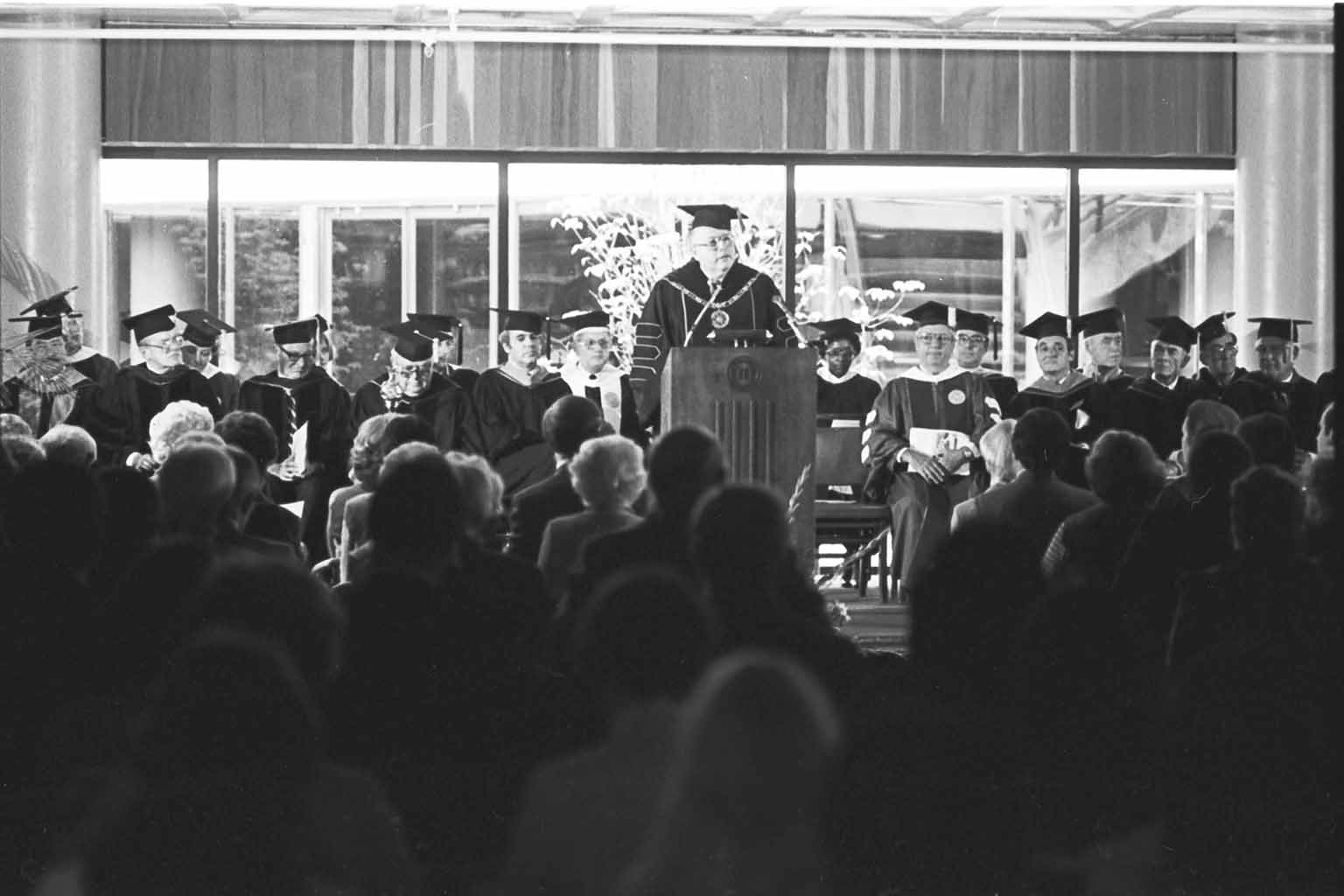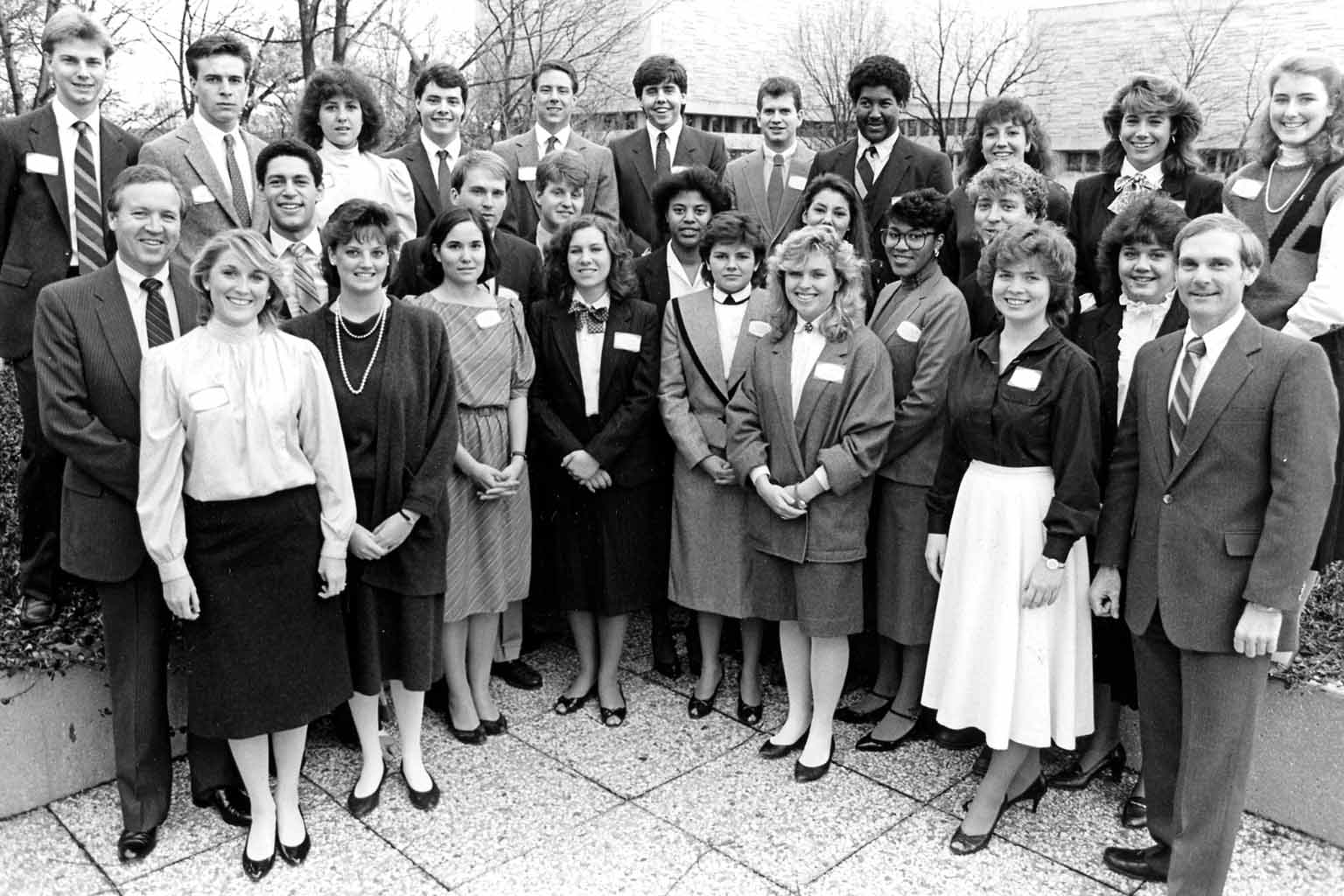In 1980, the school was singled out by the National Association of Schools of Public Affairs and Administration (NASPAA) as being a model graduate program for other schools.
“Indiana University, through its School of Public and Environmental Affairs, has accepted the challenge of conceiving, designing, and managing a singular program for the differing needs of various parts of the state of Indiana,” a NASPAA report read. “It has done so in a fashion which maintains quality, assures transferability of student work, and standardizes the meaning of the degree while serving well the various clienteles.”
A NASPAA poll of its 250 member schools during this same time saw SPEA rank first in published research and fourth in overall peer prestige.
SPEA celebrated its 10th anniversary with the opening of its new home and a yearlong celebration. The school had grown from 25 students in the first graduating class to 351 in 1982, and the number of faculty more than doubled from 41 to 90 in that same span.
In 1987, founding dean Bonser stepped down and A. James Barnes, former deputy administrator for the United States Environmental Protection Agency, was selected as the new dean. Under Barnes’ leadership, SPEA was selected as the Midwestern Regional Center for the U.S. Department of Energy’s National Institute for Global Environmental Change to address the growing discussion of climate change.
In 1994, the School of Public and Environmental Affairs at both IU Bloomington and IUPUI played critical roles in the Parliamentary Development Project for Ukraine, a partnership with the country that has grown over time. The Center on Urban Policy and the Environment also was established at IUPUI.
Enrollment continued to expand, and when SPEA celebrated its 25th anniversary in 1997, it included more than 100 full-time faculty, 600 graduate students, and 1,600 undergraduate students, making it the largest school of its kind.
The school also reached No. 3 in U.S. News & World Report’s rankings of “America’s Top Graduate Schools” in 1998, the highest-ranked graduate program at IU that year.
“We are delighted, of course, that the quality of the program we have put together is recognized,” said Barry Rubin, the associate dean of graduate programs in Bloomington. “In our 25-year existence, we have made strides in developing a program that is nationally ranked. Our faculty have been very productive as researchers and scholars.”
After leading the school for 12 years, Barnes stepped down as dean in 2000. Barnes’ ability to recruit fresh faculty talent had encouraged interdisciplinary collaboration and expanded SPEA’s footprint at IU and on national and global scales.
“I feel very good about the school’s position,” Barnes said. “We are in company with Harvard and Princeton, so we have good people and good programs. I think it makes sense to turn it over to someone else at this point.”
That someone else was Astrid Merget, a former senior advisor to the secretary of the U.S. Department of Health and Human Services during the Jimmy Carter and Bill Clinton administrations.
“I know both Barnes and Bonser,” Merget said. “My vision builds on their visions. Each advanced the school significantly to a position of national recognition. My goal is to capitalize on their vision and project the school into the 21st century.”










